What Are Knee Sleeves For: The Ultimate Guide Revealed
Have you ever asked yourself, “What are knee sleeves for?” They’re more than just a fitness accessory. Whether you’re a seasoned athlete or a fitness enthusiast, this comprehensive article delves into the benefits, functionality, and optimal usage of knee sleeves. It also addresses common queries and offers key insights.
What are knee sleeves for? – When it comes to answering the question, ‘What are knee sleeves for?’ the answer is simple: they are protective gear that offers support and stability to the knees during physical activities. The purpose of knee sleeves is to reduce the risk of injury, making them indispensable during workouts.
What Is a Knee Sleeve?
A knee sleeve is more than just a fitness accessory. It’s a supportive garment that is usually made from neoprene and is worn around the knee during exercise. Knee sleeves are ideal for athletes and gym-goers; they are helpful in activities that strain the knees, like weightlifting or running.
The key purpose of knee sleeves is to offer support and help prevent injuries. Unlike knee braces for lifting, knee sleeves offer gentle compression. This compression boosts blood flow, alleviating pain and swelling post-exercise.

7mm Weightlifting Knee Sleeves
Discover the ultimate support with Warm Body Cold Mind knee sleeves providing stability and comfort.
What Do Knee Sleeves Do?
Knee sleeves have a few key roles. They provide crucial support to the knee during heavy lifting, helping to maintain proper alignment. This is vital for safe and effective exercise.
You might wonder, ‘How do knee sleeves work?’ One way is by improving proprioception – your body’s ability to sense its movement and position. Better proprioception means improved form and balance, cutting down the injury risk.
If you are into weightlifting, you probably are asking yourself, “What do knee sleeves do for lifting?” Knee sleeves provide stability while performing lifts, which is particularly important in exercises that require precision. This stability enhances performance and boosts the lifters confidence, enabling them to have concentrated and productive workout sessions.
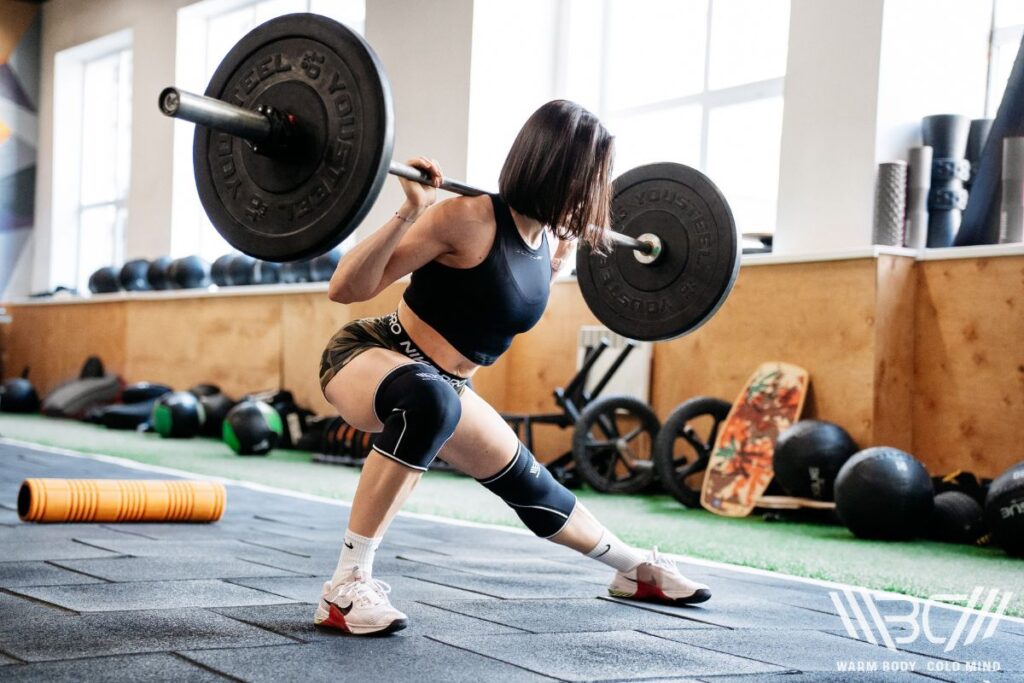
To sum up, the benefits of knee sleeves are clear. Do knee sleeves help in actual knee protection? Definitely, they offer stability and keep the knee warm, making muscles and ligaments less prone to sprains or strains. For those with past knee injuries, sleeves can bring back confidence in their workouts.
Knowing how knee sleeves work and when to wear knee compression sleeves can significantly boost your fitness journey, whether you’re hitting the gym or the track.
3 Main Types of Knee Sleeves
There are different types of knee sleeves and each type serves different purposes. Understanding the benefits of each type will help you select the right one for your needs.
1. Nylon Knee Sleeves
Weightlifters often prefer nylon knee sleeves because they are lighter and provide flexibility compared to neoprene ones. They offer a balance of support and mobility, making them ideal for exercises like squats and deadlifts.
- Pros: Nylon sleeves provide breathability, minimizing discomfort while being used. What’s even better is that they fit comfortably and offer stability without restricting your range of motion.
- Cons: They might not provide as much compression as neoprene sleeves, which could be a disadvantage for those looking for joint warmth and a snugger fit.
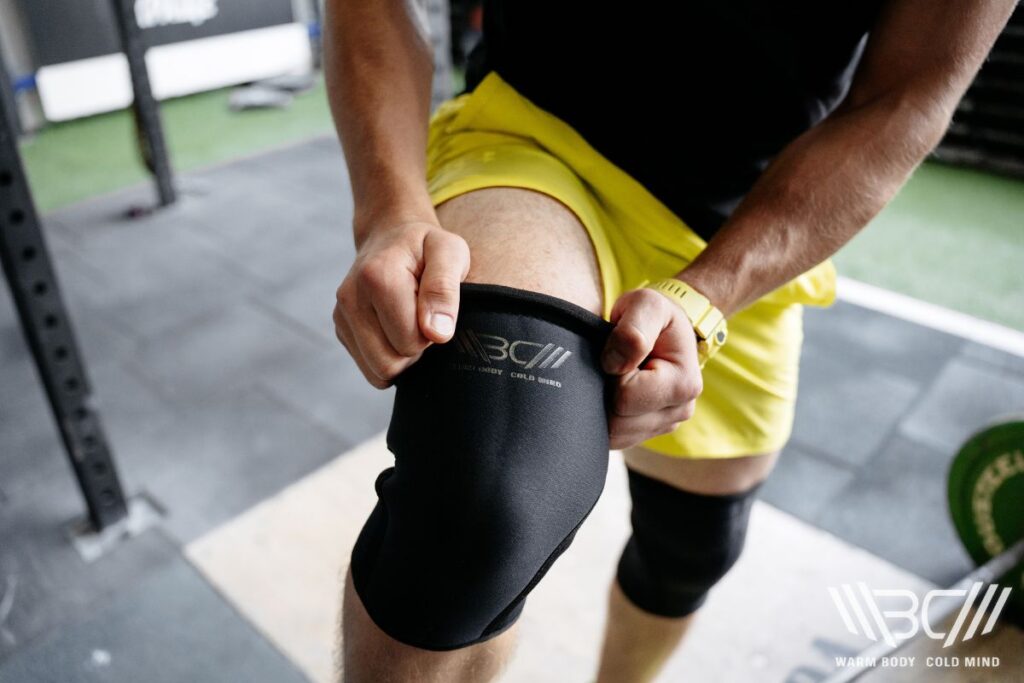
2. Knee Brace
Knee braces for lifting are way different from knee sleeves. That’s because a knee sleeve provides general support and compression whereas a knee brace offers targeted support, often with metal or plastic structures to restrict certain movements.
- Pros: Braces can help those recovering from injuries or dealing with knee problems. They provide an added layer of protection to prevent harm to the knee.
- Cons: Knee braces are often larger and more restrictive compared to knee sleeves, which can limit movement during exercises.
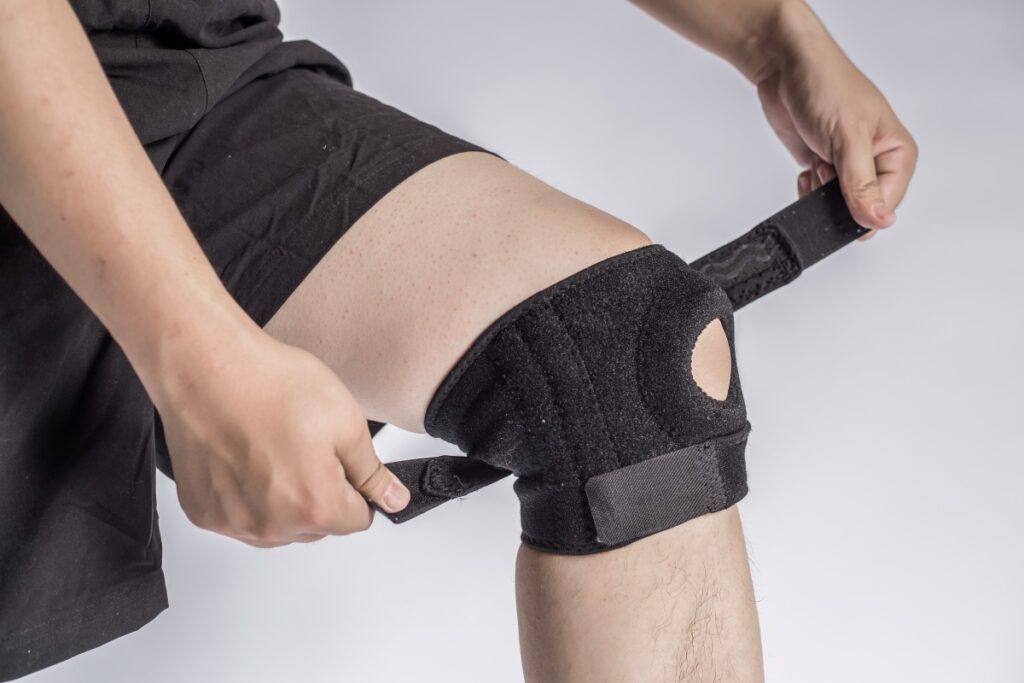
3. Compressive Knee Sleeves
Compressive knee sleeves are popular among individuals who enjoy fitness activities. These sleeves provide a combination of support and flexibility that is highly sought after.
- Pros: These sleeves provide compression, which helps enhance blood circulation and alleviate discomfort. They are versatile enough to be used for activities such as running or weightlifting.
- Cons: They might not provide enough support for heavy lifting or enough flexibility for high-intensity workouts.
Each of these knee sleeves offers unique benefits and comes with its drawbacks. Whether you are into heavy lifting, recovering from an injury or just engaged in general exercise, there is a type that can support your knees and help you improve your performance. Remember, picking the right one depends on your needs and fitness goals.
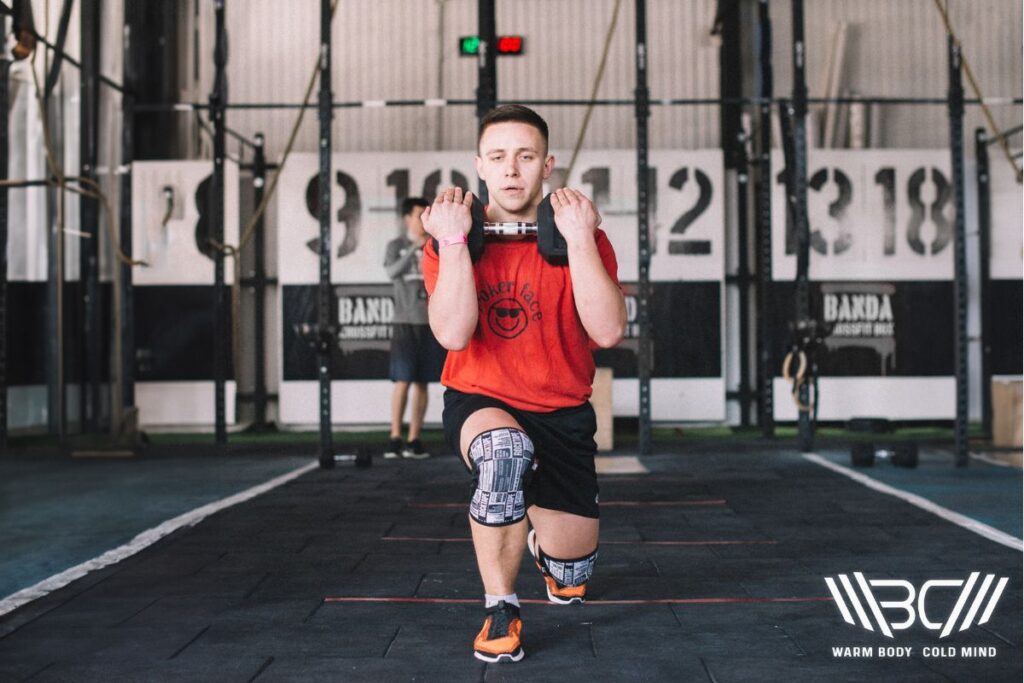
When to Use Knee Sleeves?
Weightlifters should consider using knee sleeves into their fitness routine as they can greatly enhance both the effectiveness and safety of their workouts. It’s important to understand when and why to use them to maximize results and minimize the risk of injury.
Knee sleeves are for individuals engaging in weightlifting, powerlifting or functional fitness workouts. These physical activities exert strain on the knees. The main purpose of using knee sleeves is to provide support to the knees during these demanding exercises.
If you’re engaging in exercises that involve bending and straightening of the knees such as squats or deadlifts, knee sleeves can help a lot. They prove beneficial when lifting weights since they help in limiting excessive knee movement and distributing the weight more evenly.
Knee sleeves are essential for those who have experienced knee injuries or deal with pain. These supportive accessories offer more than support; they can also help prevent injuries, increase confidence and contribute to a safer and more successful performance.
It’s important to keep in mind that knee sleeves aren’t a one size fits all solution. People who are just starting out with exercise or engaging in low impact activities may not need the level of support that knee sleeves provide. Likewise if your fitness routine mainly focuses on cardio or agility, knee sleeves may not be essential.
5 Benefits of Using Knee Sleeves for Weightlifting
In the world of weightlifting, knee sleeves have become a crucial accessory – and for good reason. By providing multiple advantages, they not only improve performance but also prioritize safety.
✅ Enhanced Joint Stability
Knee sleeves offer better joint stability, especially when weightlifting. As common exercises such as squats and deadlifts put considerable strain on the knees, using knee sleeves adds necessary support to the knee joint, leading to safer and more efficient lifts.
✅ Injury Prevention
Knee sleeves play an important role in preventing injuries. They offer support and compression and thus safeguard the knees from the strain and stress of intense lifting. This is especially crucial for seasoned lifters who have been through knee injuries before.
✅ Improved Blood Circulation
By providing firm compression around the knee, knee sleeves actively improve blood flow to the knee area. This boost in circulation not only facilitates quicker recovery, but also decreases post-workout inflammation and discomfort, enabling athletes to maintain a consistent and effective training routine.
✅ Proprioception Boost
Knee sleeves improve proprioception, or the body’s ability to sense its position in space. By improving this sense, lifters can effectively and safely maintain proper form, essential for effective weightlifting.
✅ Confidence in Lifting Heavier
Knee sleeves not only offer physical support, but also have a positive impact on attitude. With the assurance of knee protection, you may find yourself more confident to take on heavier loads and push your limits during workouts.
When You Don’t Need Lifting Knee Sleeves?
While knee sleeves can be highly beneficial, for weightlifters it’s crucial to consider their use and importance in situations. For individuals who focus on low impact exercises such as cycling or swimming the additional support provided by knee sleeves may not be necessary.
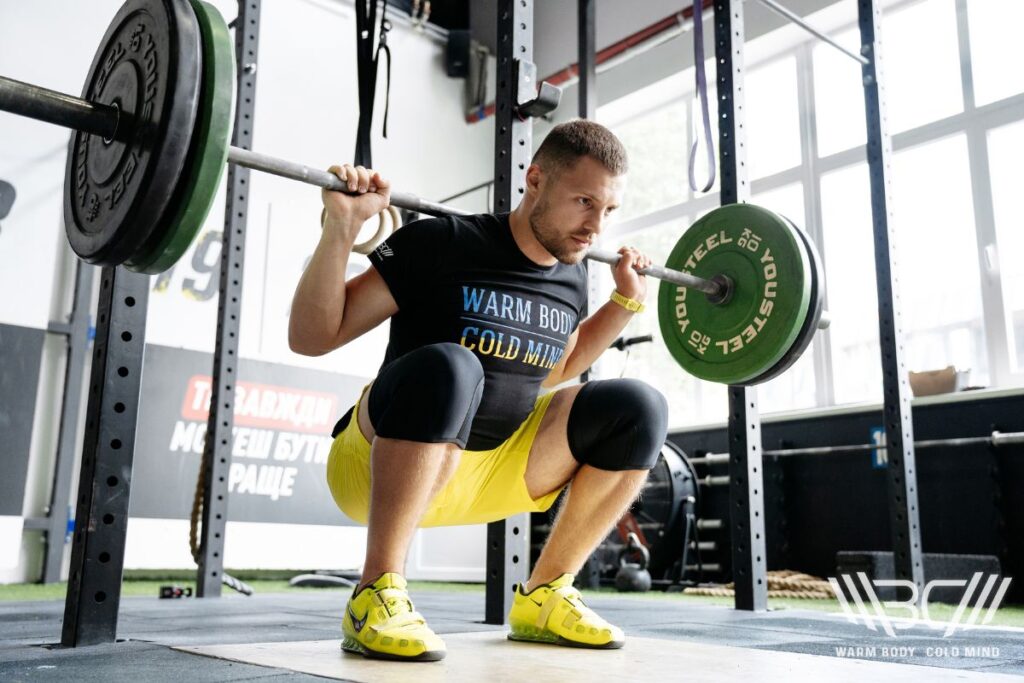
Moreover beginners who lift lighter weights may not benefit much from knee sleeve uses. It’s important to note that knee sleeves should not replace form and technique.
Depending only on knee sleeves can give you a false sense of security. This can impact your lifting technique, particularly when it is incorrect and potentially result in injury. Therefore it’s important to prioritize maintaining proper form and technique rather than relying solely on supportive gear when engaging in weightlifting activities.
How to Use Knee Sleeves?
It is important to use knee sleeves correctly to maximize the benefits of knee sleeves and make the most of their support.
1. Choose the Right Size
If you are asking yourself, “Are knee sleeves supposed to be tight?” The answer is that knee sleeves should ideally provide a fit without being excessively tight as that could restrict blood flow or lead to discomfort. To ensure the size, measure your knee circumference and refer to the manufacturer’s sizing guide.
2. Wear Them for the Right Activities
Knee sleeves offer the best support when engaging in high impact activities such as weightlifting, squats or functional fitness. They may not be necessary for low impact exercises.
3. Put Them On Properly
To put them on, flip the sleeve inside out, pull it over your foot and then roll it up to your knee. Make sure it feels comfortable and covers your knee joint properly.
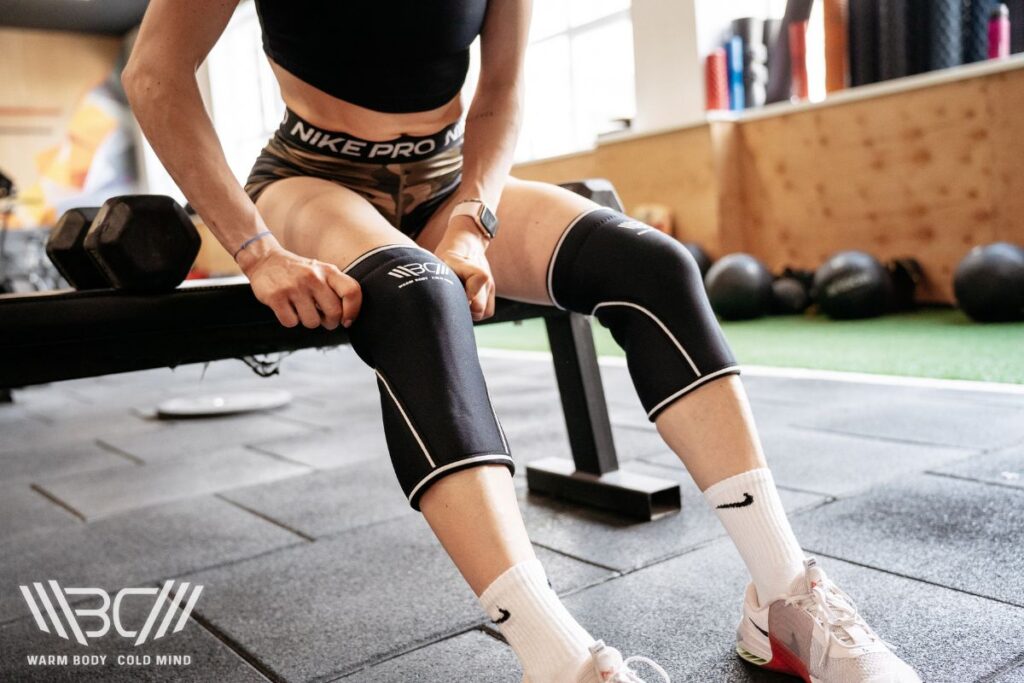
4. Keep Them Clean
Follow the instructions and clean them regularly. This maintains their elasticity and hygiene.
5. Listen to Your Body
While knee sleeves can offer some support they should not be seen as a solution. It is crucial to seek advice to address any underlying issues if you are dealing with knee pain.
How to Choose the Best Knee Sleeves?
When choosing the right knee sleeves it’s important to consider your needs and the different options available. Here are some important factors to keep in mind;
1. Determine Your Purpose
Ask yourself why you want knee sleeves. Are they for weightlifting, overall fitness or preventing injuries? Remember, different activities may call for different kinds of sleeves.
2. Material Matters
Knee sleeves are usually made from neoprene or nylon materials. Neoprene provides support and warmth which makes it perfect for activities involving lifting and promoting joint stability. On the other hand, nylon is an option that offers better breathability, making it more suitable for dynamic activities.

3. Right Size for a Perfect Fit
A knee sleeve should be snug, providing a fit without limiting circulation. It’s important to measure your knee circumference and refer to the manufacturer’s sizing chart for guidance. If the sleeve doesn’t fit properly it may not work effectively and can cause discomfort.
4. Comfort and Mobility
If it’s possible, try out different sleeves. It’s important that they are comfortable and allow for movement, especially if you plan on wearing them for longer periods of time. Remember, you want to avoid any pinching or bunching behind the knee area.
5. Durability and Quality
Consider investing in quality knee sleeves. While it may cost a little more initially, high quality sleeves can endure regular use and retain their elasticity and support.
6. Read Reviews and Recommendations
When searching for knee sleeves, it’s important to consider the reviews and recommendations of people who have used these products before. Hearing about their experiences can give you insights into how well the sleeves perform and how long they last.
Our Recommendation – Warm Body Cold Mind Weightlifting Knee Sleeves
Our WBCM weightlifting knee sleeves provide athletes with unmatched support for the knee and ligaments. Featuring a unique anatomical design, our sleeves boast an anti-slip feature for stability during your workouts.
FAQ
How to Measure Knee Sleeves for Lifting?
Use a measuring tape to determine the size for knee sleeves. Wrap it around the widest area of your knee and ensure it is comfortably snug, but not excessively tight. Consult the sizing chart provided by the product to find the fit that suits your desired level of compression for lifting.
How to Wash Knee Sleeves?
To wash knee sleeves, simply flip them inside out and soak them in a mixture of water and mild detergent. Gently hand wash them, rinse them and then let them air dry. It’s best to avoid using a washing machine or dryer to maintain the elasticity of the material and prevent any damage.
What’s Better, Knee Sleeves or Wraps?
When it comes to supporting and preventing injuries knee sleeves are a great option as they offer comfort and warmth. On the other hand, wraps provide more support and stability which makes them more suitable for heavy lifting and powerlifting. Your decision should be based on the activity you engage in, your comfort preferences, as well as the level of support you require.
Conclusion
Our comprehensive guide has covered everything from their benefits to the best types. Whether you’re a pro lifter or a fitness novice, understanding the role of knee sleeves is crucial for injury prevention.
Got questions or want to share your experiences? Drop a comment below and join our fitness community discussion!
References:
- David Greene; Karl Hamson; Curtis Bay; Chris Bryce, “Effects of protective knee bracing on speed and agility,” The American journal of sports medicine 28, no. 4 (2000): 453-459.
- Dennis Kramer; Patricia Miller; Iman Berrahou; Yi-Meng Yen; Benton E. Heyworth, “Collateral ligament knee injuries in pediatric and adolescent athletes,” Journal of Pediatric Orthopaedics 40, no. 2 (2020): 71-77.
- Maria Pereira; Martim Bottaro; Lee Brown; Valdinar Rocha-Junior; Saulo Martorelli; Murillo Neumann; Jake Carmo, “The effects of graduated compression sleeves on muscle performance: a randomised controlled trial,” International Journal of Sports Science & Coaching 9, no. 5 (2014): 985-992.
- Nahdatul Aishah Mohd Sharif; Siew-Li Goh; Juliana Usman; Wan Kamarul Zaman Wan Safwani, “Biomechanical and functional efficacy of knee sleeves: a literature review,” Physical Therapy in Sport 28 (2017): 44-52.
- Niyousha Mortaza; Ismail Ebrahimi; Ali Ashraf Jamshidi Vahid Abdollah; Mohammad Kamali; Wan Abu Bakar Wan Abas; Noor Azuan Abu Osman, “The effects of a prophylactic knee brace and two neoprene knee sleeves on the performance of healthy athletes: A crossover randomized controlled trial.” PLoS One 7, no. 11 (2012): e50110.
- Photo by @whatwolf, Freepik.
Author: Sergii Putsov
PhD in Sport Science, Olympic weightlifting, Strength & Conditioning coach and fitness expert
Sergii Putsov is a professional weightlifter with over 20 years of experience and multiple national medals. He was a member of the National weightlifting team, competing in the 94 kg weight class. Sergii holds a master’s degree in Olympic & Professional Sport Training and a Ph.D. in Sport Science. After his athletic career, Sergii transitioned into coaching and is now responsible for designing training programs, writing blog articles, providing live commentary for international weightlifting competitions, and hosting sport and fitness seminars worldwide.

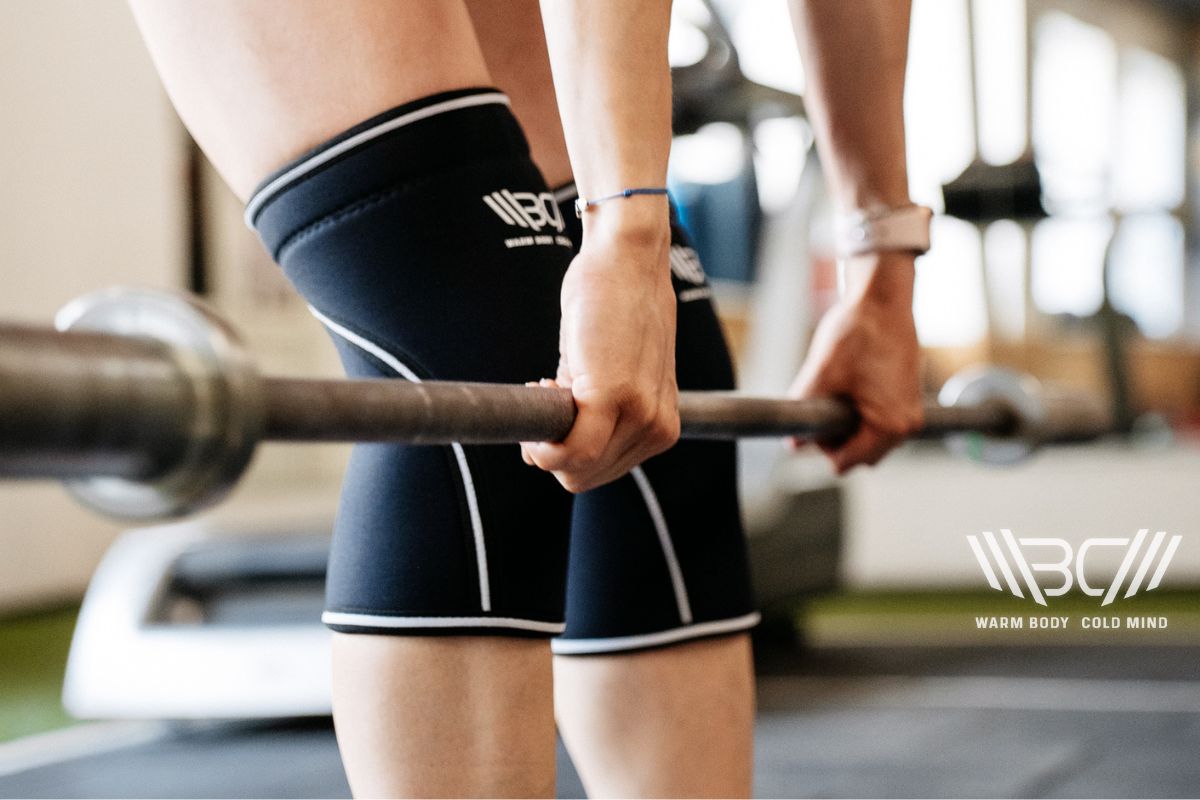
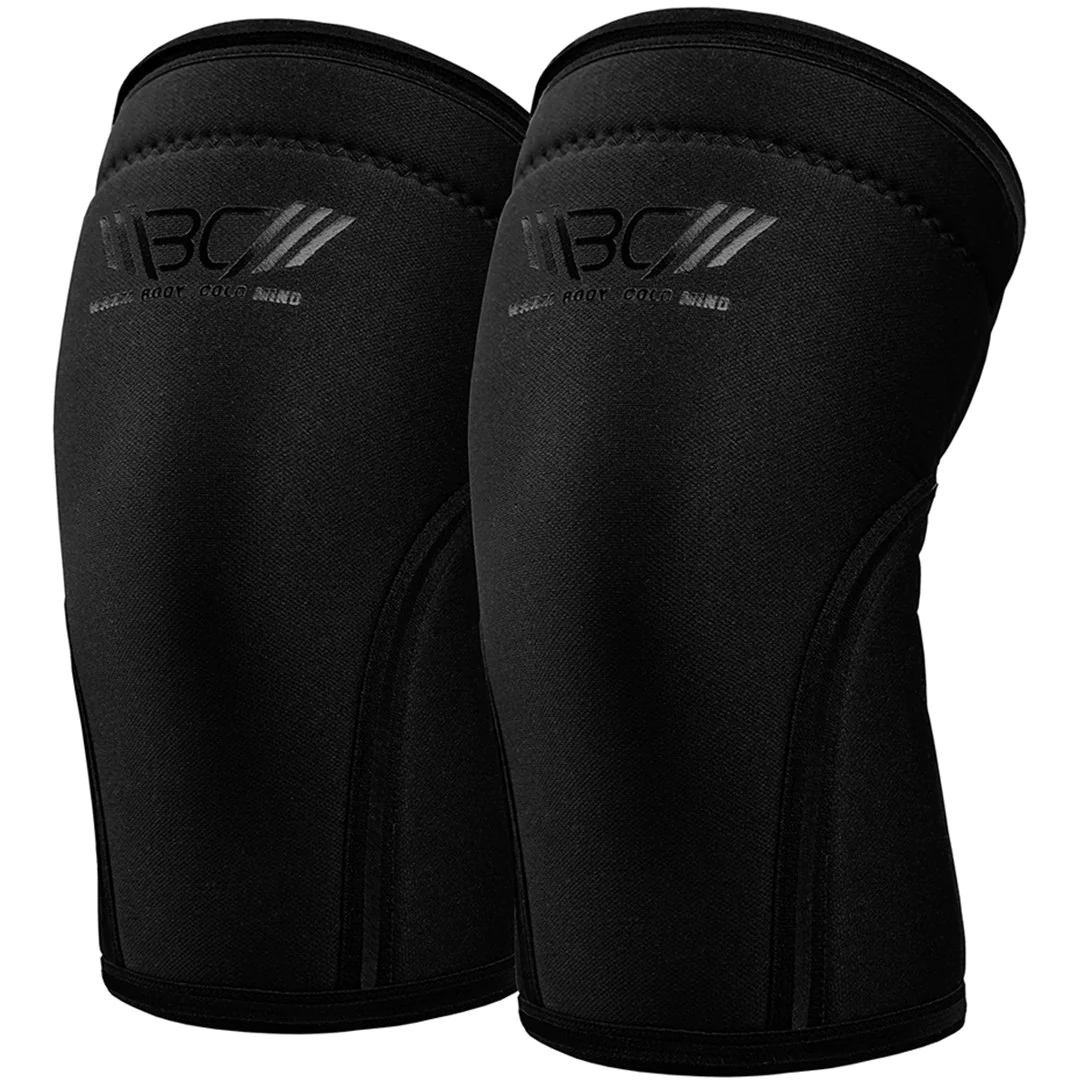
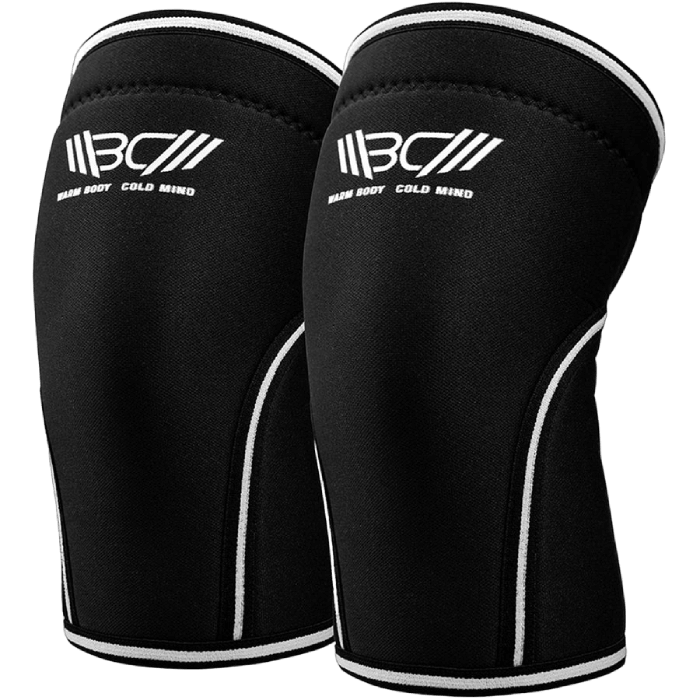

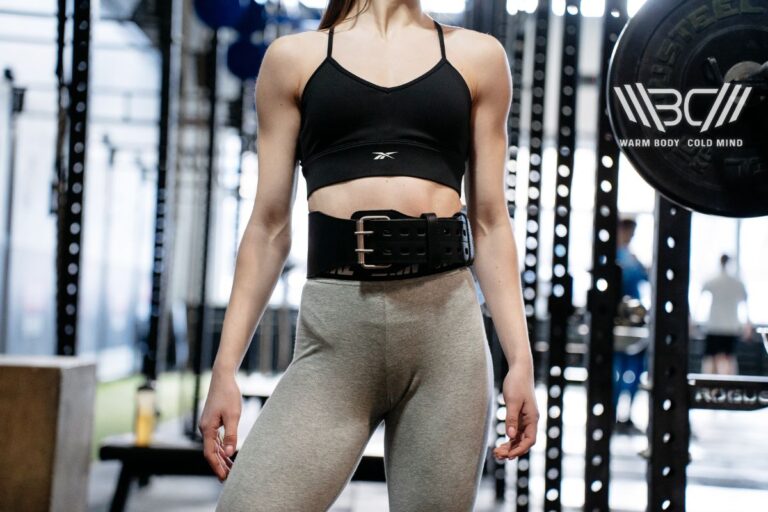
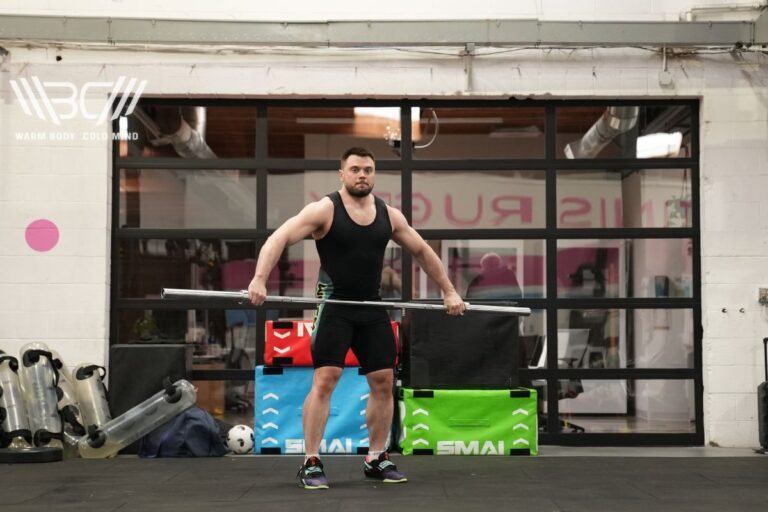


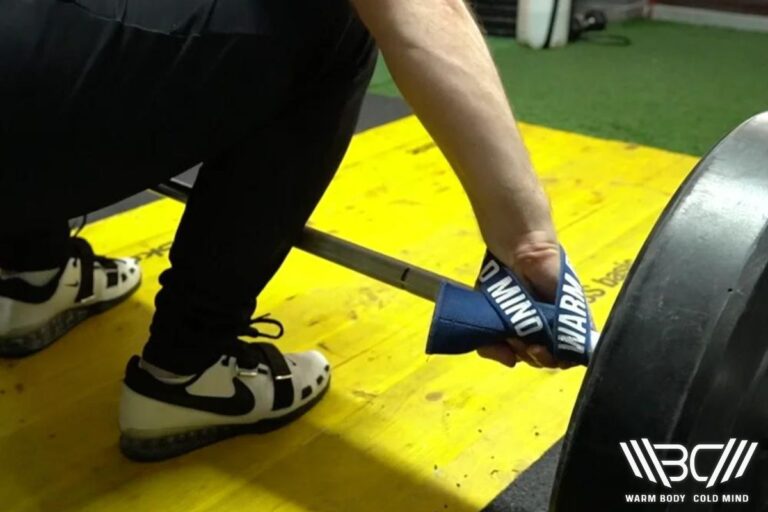
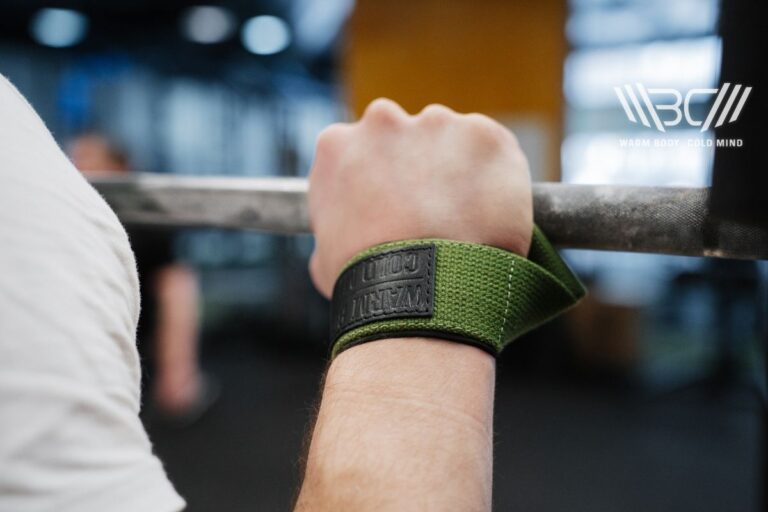
A cool and detailed article about knee support and the use of knee sleeves. I didn’t even realize they were so useful.
When I started training in the gym, I thought that squats without knee sleeves were more comfortable, like nothing was in the way. But the more I trained and talked to other athletes, the more I realized that I had to try it. And for several years now I have been training in knee pads. They help keep my knees healthier and kind of hold them in place. So now I also advise beginners to start using them at a certain stage of training.